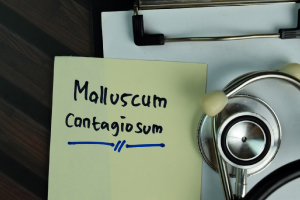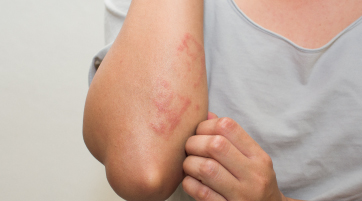

Lordosis is a condition that affects the natural curvature of the spine, leading to an exaggerated inward lordotic curve in the lower back or neck. In this article, we will delve into the lordosis definition and provide a comprehensive understanding of this condition. We will explore its definition, symptoms, causes, and a range of treatment options available for lumbar lordosis, including exercises that can effectively alleviate the condition.
What is Lordosis?
Lordosis, also known as swayback or saddleback, is an excessive inward curvature of the spine. Our spine has natural curves that help distribute the body’s weight evenly, maintaining balance and stability. We are referring to an excessive inward lumbar curve in the lumbar or cervical lordosis.
Symptoms of Lordosis
Individuals with this condition often exhibit distinct lumbar lordosis symptoms that can affect their daily lives and overall well-being. Here are some common lumbar lordosis symptoms:
1. Prominent Arch in the Lower Back or Neck
This condition can cause a noticeable arch in the lower back or neck, making the buttocks or abdomen appear more prominent than usual.
2. Back Pain and Muscle Stiffness
The altered lordosis posture resulting from this condition can lead to back pain and muscle stiffness, making it uncomfortable for you to stand or walk for prolonged periods.
3. Mobility Issues and Nerve Compression
In severe cases, it can cause nerve compression and may impair mobility. The compression may result in radiating pain, numbness, or weakness in the legs or arms.
Causes of Lordosis
Understanding the underlying causes of this disease is crucial for effective treatment and prevention. Here are some common lordosis causes:
- Poor Posture: Sitting or standing in an incorrect posture for extended periods can gradually lead to the development of this disease.
- Obesity: Excessive weight can put a strain on the spine, contributing to the development of disease.
- Medical Conditions: Certain medical conditions, such as osteoporosis, kyphosis and spondylolisthesis, can increase the risk of developing it.
- Muscle Imbalances and Congenital Abnormalities: Muscle imbalances or congenital abnormalities can affect the natural curvature of the spine, leading to this condition.
Solving the Problem of Lordosis
Lumbar lordosis treatment options are as follows:
1. Correcting Posture
Maintaining a proper posture is a crucial aspect of treating this condition. Practising good posture while sitting, standing, and walking can reduce strain on the spine and gradually improve its curvature. Ergonomic chairs, lumbar support pillows, and supportive footwear can also aid in maintaining a healthy posture.
2. Physical Therapy
Physical therapy plays a vital role in healing this condition. A physical therapist can design a customised exercise program to strengthen the muscles supporting the spine, particularly the core muscles. Pelvic tilts, abdominal strengthening exercises, and stretches can improve flexibility and restore the natural curvature of the spine. Lumbar lordosis exercises that target the lower back can be beneficial in reducing discomfort and improving alignment.
3. Pain Management Techniques
For temporary relief, pain management techniques such as hot or cold therapy, massage, and over-the-counter pain medications can be used. However, it is essential to consult a healthcare professional before starting any medication or treatment regimen.
4. Medical Interventions
In severe cases where conservative measures do not yield satisfactory results, medical interventions may be necessary. Bracing can help control the progression of this condition, especially in adolescents with still-developing spines. Surgery is considered a last resort and is typically reserved for extreme cases where the curvature significantly impairs daily functioning or leads to nerve compression.
How to Prevent Lordosis?
Preventing the development or progression of this condition is always preferable to treatment. Here’s what you can do to prevent it:
- Maintaining a Healthy Weight: Maintaining a healthy weight can reduce strain on the spine and minimise the risk of this disease.
- Practising Good Posture: Regularly practising good posture while sitting, standing, and walking can help prevent this condition.
- Exercising Daily: Engaging in regular exercise, particularly exercises that strengthen the core muscles, can help maintain proper spinal alignment and prevent this condition.
- Lifestyle Modifications: This involves maintaining a neutral spine alignment while lifting heavy objects, avoiding prolonged periods of sitting or standing in one position and taking regular breaks to stretch and change positions.
Also, using supportive furniture and equipment that promote good posture, such as ergonomic chairs and adjustable desks, can help reduce strain on the spine.
How to Cope with this Condition?
Implementing coping strategies can help individuals manage the emotional and psychological impact of living with this condition. Here are some coping strategies to take into consideration:
1. Education and Understanding
Learning about its causes and treatment options can empower individuals to make informed decisions and take the right precautions. Understanding the condition can also reduce anxiety and promote a sense of control.
2. Stress Management Techniques
Practising techniques such as deep breathing, meditation, mindfulness, or relaxation exercises can help reduce stress levels and promote overall well-being.
3. Positive Self-Talk and Self-Care
Engaging in positive self-talk and self-care practices can boost self-esteem and emotional resilience. Practising self-compassion, focusing on personal strengths, and engaging in activities that bring joy and fulfilment can contribute to a positive mindset.
4. Setting Realistic Goals
Setting realistic goals and celebrating small achievements along the way can boost motivation and foster a sense of accomplishment.
Remember, it is essential to consult with a healthcare professional, therapist, or counsellor for personalised guidance and support tailored to individual needs.
Conclusion
Addressing the psychological aspects of living with Lordosis is crucial for overall well-being. Seeking psychological support, connecting with support groups, and implementing coping strategies can enhance resilience, promote emotional well-being, and provide valuable support in navigating the challenges associated with the condition. By combining physical treatments with psychological support, individuals can develop a comprehensive approach to managing this condition and improving their quality of life.




